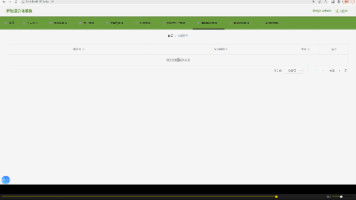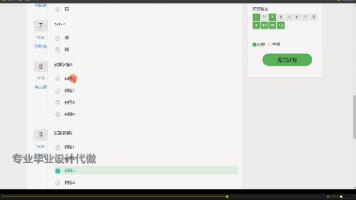OpenManus详解之 LLM.py 的TokenCounter类
它的作用是:精确估算一条消息在调用大模型(如 GPT-4o、Claude)时会消耗多少 tokens。
·
OpenManus详解之 LLM.py 的TokenCounter类
TokenCounter
它的作用是:精确估算一条消息在调用大模型(如 GPT-4o、Claude)时会消耗多少 tokens。
因为:
- 大模型对输入长度有限制(比如 GPT-4o 最多 128K tokens)
- 超过限制会导致 API 报错
- 不同内容类型(文本、图片、工具调用)计算方式不同
- 图像不是按“文件大小”计费,而是按分辨率和细节级别计算
- 所以这个类就是为了解决:“我这条消息到底能不能发?”的问题。
常量
# Token constants
BASE_MESSAGE_TOKENS = 4
FORMAT_TOKENS = 2
LOW_DETAIL_IMAGE_TOKENS = 85
HIGH_DETAIL_TILE_TOKENS = 170
# Image processing constants
MAX_SIZE = 2048
HIGH_DETAIL_TARGET_SHORT_SIDE = 768
TILE_SIZE = 512
含义解释:
| 常量 | 说明 |
|---|---|
| BASE_MESSAGE_TOKENS = 4 | 每条消息的基础开销(角色、括号等结构) |
| FORMAT_TOKENS = 2 | 整个消息列表的格式开销(如 [, ]) |
| LOW_DETAIL_IMAGE_TOKENS = 85 | 低清图固定收费 85 tokens |
| HIGH_DETAIL_TILE_TOKENS = 170 | 每个 512×512 的高清图块约 170 tokens |
| MAX_SIZE = 2048 | 图像先缩放到不超过 2048px 边长 |
| HIGH_DETAIL_TARGET_SHORT_SIDE = 768 | 短边统一拉到 768px |
| TILE_SIZE = 512 | 切成 512px 正方形小块 |
函数 count_text(self, text: str) -> int
使用tokenizer计算字符串的token数量
def count_text(self, text: str) -> int:
"""Calculate tokens for a text string"""
return 0 if not text else len(self.tokenizer.encode(text))
Example:
tokencounter = TokenCounter() # 初始化一个 LLM 实例
text = "Hello, how are you?"
tokens = tokencounter.token_counter(text)
print(tokens) # 输出: 7
# tokens: ['Hello', ',', ' how', ' are', ' you', '?']
函数 count_image(image_item: dict) -> int
根据图像的 detail 设置和尺寸,返回所需 tokens。
假设我们输入的image_item是一个字典,大概以下三个样
image_item = {
"type": "image_url",
"image_url": {"url": "data:image/png;base64,..."},
"detail": "low"
}
###################################################
image_item = {
"type": "image_url",
"image_url": {"url": "..."},
"detail": "high",
"dimensions": [1920, 1080]
}
####################################################
image_item = {
"type": "image_url",
"image_url": {"url": "..."},
"detail": "high"
# 没有 dimensions 字段
}
首先,我们从image_item里获取"detail"字段
如果"detail"字段为"low",则返回 85
detail = image_item.get("detail", "medium")
# For low detail, always return fixed token count
if detail == "low":
return self.LOW_DETAIL_IMAGE_TOKENS
如果"detail"字段为"high" 或 “medium”,进行以下判断
如果有"dimensions"字段,则返回该字段的值,并输入到辅助函数中
# For medium detail (default in OpenAI), use high detail calculation
# OpenAI doesn't specify a separate calculation for medium
# For high detail, calculate based on dimensions if available
if detail == "high" or detail == "medium":
# If dimensions are provided in the image_item
if "dimensions" in image_item:
width, height = image_item["dimensions"]
return self._calculate_high_detail_tokens(width, height)
没有,则默认按 1024 算
return (
self._calculate_high_detail_tokens(1024, 1024) if detail == "high" else 1024
)
完整代码
def count_image(self, image_item: dict) -> int:
"""
Calculate tokens for an image based on detail level and dimensions
For "low" detail: fixed 85 tokens
For "high" detail:
1. Scale to fit in 2048x2048 square
2. Scale shortest side to 768px
3. Count 512px tiles (170 tokens each)
4. Add 85 tokens
"""
# Get detail level
detail = image_item.get("detail", "medium")
# For low detail, always return fixed token count
if detail == "low":
return self.LOW_DETAIL_IMAGE_TOKENS
# For medium detail (default in OpenAI), use high detail calculation
# OpenAI doesn't specify a separate calculation for medium
# For high detail, calculate based on dimensions if available
if detail == "high" or detail == "medium":
# If dimensions are provided in the image_item
if "dimensions" in image_item:
width, height = image_item["dimensions"]
return self._calculate_high_detail_tokens(width, height)
return (
self._calculate_high_detail_tokens(1024, 1024) if detail == "high" else 1024
)
辅助函数 _calculate_high_detail_tokens(self, width: int, height: int) -> int
这个函数用于计算高细节图片的token数。具体实现如下:
- 缩放到最大2048px内
如果当前长或宽高于 2048px,则将长或宽缩放到 2048px。
# Step 1: Scale to fit in MAX_SIZE x MAX_SIZE square
if width > self.MAX_SIZE or height > self.MAX_SIZE:
scale = self.MAX_SIZE / max(width, height)
width = int(width * scale)
height = int(height * scale)
- 短边缩放到 768 px
# Step 2: Scale so shortest side is HIGH_DETAIL_TARGET_SHORT_SIDE
scale = self.HIGH_DETAIL_TARGET_SHORT_SIDE / min(width, height)
scaled_width = int(width * scale)
scaled_height = int(height * scale)
- 切成 512 px 的小块
# Step 3: Count number of 512px tiles
tiles_x = math.ceil(scaled_width / self.TILE_SIZE)
tiles_y = math.ceil(scaled_height / self.TILE_SIZE)
total_tiles = tiles_x * tiles_y
- 计算最终的 Token
# Step 4: Calculate final token count
return (
total_tiles * self.HIGH_DETAIL_TILE_TOKENS
) + self.LOW_DETAIL_IMAGE_TOKENS
Example:
image_item = {
"type": "image_url",
"image_url": {"url": "..."},
"detail": "high",
"dimensions": [1920, 1080]
}
tokens = tokencounter.count_image(image_item)
# → 调用 _calculate_high_detail_tokens(1920, 1080)
"""
Step 1: 缩放到最大 2048px 内 ✅
当前最大边是 1920 < 2048 → 不缩放
Step 2: 短边缩放到 768px
当前短边是 1080 → scale = 768 / 1080 ≈ 0.711
新宽高:
width = 1920 × 0.711 ≈ 1365
height = 1080 × 0.711 ≈ 768
Step 3: 切成 512px 小块
x方向:ceil(1365 / 512) = ceil(2.66) = 3
y方向:ceil(768 / 512) = ceil(1.5) = 2
总 tile 数 = 3 × 2 = 6
Step 4: 计算最终 token
total_tokens = 6 * 170 + 85 = 1020 + 85 = 1105
"""
完整代码
def _calculate_high_detail_tokens(self, width: int, height: int) -> int:
"""Calculate tokens for high detail images based on dimensions"""
# Step 1: Scale to fit in MAX_SIZE x MAX_SIZE square
if width > self.MAX_SIZE or height > self.MAX_SIZE:
scale = self.MAX_SIZE / max(width, height)
width = int(width * scale)
height = int(height * scale)
# Step 2: Scale so shortest side is HIGH_DETAIL_TARGET_SHORT_SIDE
scale = self.HIGH_DETAIL_TARGET_SHORT_SIDE / min(width, height)
scaled_width = int(width * scale)
scaled_height = int(height * scale)
# Step 3: Count number of 512px tiles
tiles_x = math.ceil(scaled_width / self.TILE_SIZE)
tiles_y = math.ceil(scaled_height / self.TILE_SIZE)
total_tiles = tiles_x * tiles_y
# Step 4: Calculate final token count
return (
total_tiles * self.HIGH_DETAIL_TILE_TOKENS
) + self.LOW_DETAIL_IMAGE_TOKENS
函数 count_content(self, content: Union[str, List[Union[str, dict]]]) -> int
处理多模态消息内容
代码
def count_content(self, content: Union[str, List[Union[str, dict]]]) -> int:
"""Calculate tokens for message content"""
# content为空,返回0
if not content:
return 0
# 如果为 str 格式,直接返回 count_text 函数处理结果
if isinstance(content, str):
return self.count_text(content)
# 如果为 list 列表或其他格式,遍历列表,对每个元素进行处理
token_count = 0
for item in content:
# 元素为 str ,同上
if isinstance(item, str):
token_count += self.count_text(item)
# 元素为 dict ,判断是否存在 "text" 或 "content" 键,存在则处理
elif isinstance(item, dict):
if "text" in item:
token_count += self.count_text(item["text"])
elif "image_url" in item:
token_count += self.count_image(item)
return token_count
Example:
content = [
"What's in this picture?",
{
"type": "image_url",
"image_url": {"url": "..."},
"detail": "high",
"dimensions": [1920, 1080]
}
]
tokencounter = TokenCounter()
tokens = tokencounter.count_content(content)
函数 count_tool_calls(self, tool_calls: List[dict]) -> int
计算 AI 调用外部工具(如 bash、search)所需的 token。
源码
def count_tool_calls(self, tool_calls: List[dict]) -> int:
"""Calculate tokens for tool calls"""
token_count = 0
# 遍历工具调用列表
for tool_call in tool_calls:
# 是否包含"function"键
if "function" in tool_call:
function = tool_call["function"]
# 获取函数名称并计算token数
token_count += self.count_text(function.get("name", ""))
# 获取函数参数并计算token数
token_count += self.count_text(function.get("arguments", ""))
return token_count
Example:
tool_calls = [
{
"id": "call_123",
"type": "function",
"function": {
"name": "bash",
"arguments": "{\"command\": \"ls -l\"}"
}
}
]
tokencounter = TokenCounter()
token_count = tokencounter.count_tool_calls(tool_calls)
# = count_text("bash") + count_text('{"command": "ls -l"}')
# ≈ 1 + 8 = 9 tokens
函数 count_message_tokens(self, messages: List[dict]) -> int
函数用于计算给定消息列表的 token 数量(计算整个对话历史的总 token 数量)。
代码
def count_message_tokens(self, messages: List[dict]) -> int:
"""Calculate the total number of tokens in a message list"""
total_tokens = self.FORMAT_TOKENS # Base format tokens
for message in messages:
# 先加上Base token
tokens = self.BASE_MESSAGE_TOKENS # Base tokens per message
# 加上角色的Token
tokens += self.count_text(message.get("role", ""))
# 加上对话内容的Token
if "content" in message:
tokens += self.count_content(message["content"])
# 加上工具调用的Token
if "tool_calls" in message:
tokens += self.count_tool_calls(message["tool_calls"])
# 加上工具名称与调用ID的Token
tokens += self.count_text(message.get("name", ""))
tokens += self.count_text(message.get("tool_call_id", ""))
total_tokens += tokens
return total_tokens
Example:
messages = [
{
"role": "system",
"content": "You are a helpful assistant."
},
{
"role": "user",
"content": [
"What's in this image?",
{
"type": "image_url",
"image_url": {"url": "..."},
"detail": "high",
"dimensions": [1920, 1080]
}
]
},
{
"role": "assistant",
"tool_calls": [
{
"type": "function",
"function": {
"name": "bash",
"arguments": "{\"command\": \"ls -l\"}"
}
}
]
}
]
tokencounter = TokenCounter()
total_tokens = tokencounter.count_tokens(messages)
这里偷懒,问AI了
我们来一步一步加:
1️⃣ FORMAT_TOKENS = 2
2️⃣ 第一条消息:system
- base: 4
- role (system): ≈2
- content (You are…): ≈7
- total: 4+2+7 = 13
3️⃣ 第二条消息:user(图文混合)
- base: 4
- role (user): ≈2
- content:
- text: “What’s in this image?” ≈ 6
- image: 1920x1080 high detail → 1105
- total: 4+2+6+1105 = 1117
4️⃣ 第三条消息:assistant(tool call)
- base: 4
- role (assistant): ≈3
- tool_calls: 9(前面算过)
- total: 4+3+9 = 16
✅ 最终总计:
total_tokens = FORMAT_TOKENS (2)
+ system_msg (13)
+ user_msg (1117)
+ assistant_msg (16)
---------------------
= 1148 tokens
完整代码
class TokenCounter:
# Token constants
BASE_MESSAGE_TOKENS = 4
FORMAT_TOKENS = 2
LOW_DETAIL_IMAGE_TOKENS = 85
HIGH_DETAIL_TILE_TOKENS = 170
# Image processing constants
MAX_SIZE = 2048
HIGH_DETAIL_TARGET_SHORT_SIDE = 768
TILE_SIZE = 512
def __init__(self, tokenizer):
self.tokenizer = tokenizer
def count_text(self, text: str) -> int:
"""Calculate tokens for a text string"""
return 0 if not text else len(self.tokenizer.encode(text))
def count_image(self, image_item: dict) -> int:
"""
Calculate tokens for an image based on detail level and dimensions
For "low" detail: fixed 85 tokens
For "high" detail:
1. Scale to fit in 2048x2048 square
2. Scale shortest side to 768px
3. Count 512px tiles (170 tokens each)
4. Add 85 tokens
"""
# Get detail level
detail = image_item.get("detail", "medium")
# For low detail, always return fixed token count
if detail == "low":
return self.LOW_DETAIL_IMAGE_TOKENS
# For medium detail (default in OpenAI), use high detail calculation
# OpenAI doesn't specify a separate calculation for medium
# For high detail, calculate based on dimensions if available
if detail == "high" or detail == "medium":
# If dimensions are provided in the image_item
if "dimensions" in image_item:
width, height = image_item["dimensions"]
return self._calculate_high_detail_tokens(width, height)
return (
self._calculate_high_detail_tokens(1024, 1024) if detail == "high" else 1024
)
def _calculate_high_detail_tokens(self, width: int, height: int) -> int:
"""Calculate tokens for high detail images based on dimensions"""
# Step 1: Scale to fit in MAX_SIZE x MAX_SIZE square
if width > self.MAX_SIZE or height > self.MAX_SIZE:
scale = self.MAX_SIZE / max(width, height)
width = int(width * scale)
height = int(height * scale)
# Step 2: Scale so shortest side is HIGH_DETAIL_TARGET_SHORT_SIDE
scale = self.HIGH_DETAIL_TARGET_SHORT_SIDE / min(width, height)
scaled_width = int(width * scale)
scaled_height = int(height * scale)
# Step 3: Count number of 512px tiles
tiles_x = math.ceil(scaled_width / self.TILE_SIZE)
tiles_y = math.ceil(scaled_height / self.TILE_SIZE)
total_tiles = tiles_x * tiles_y
# Step 4: Calculate final token count
return (
total_tiles * self.HIGH_DETAIL_TILE_TOKENS
) + self.LOW_DETAIL_IMAGE_TOKENS
def count_content(self, content: Union[str, List[Union[str, dict]]]) -> int:
"""Calculate tokens for message content"""
if not content:
return 0
if isinstance(content, str):
return self.count_text(content)
token_count = 0
for item in content:
if isinstance(item, str):
token_count += self.count_text(item)
elif isinstance(item, dict):
if "text" in item:
token_count += self.count_text(item["text"])
elif "image_url" in item:
token_count += self.count_image(item)
return token_count
def count_tool_calls(self, tool_calls: List[dict]) -> int:
"""Calculate tokens for tool calls"""
token_count = 0
for tool_call in tool_calls:
if "function" in tool_call:
function = tool_call["function"]
token_count += self.count_text(function.get("name", ""))
token_count += self.count_text(function.get("arguments", ""))
return token_count
def count_message_tokens(self, messages: List[dict]) -> int:
"""Calculate the total number of tokens in a message list"""
total_tokens = self.FORMAT_TOKENS # Base format tokens
for message in messages:
tokens = self.BASE_MESSAGE_TOKENS # Base tokens per message
# Add role tokens
tokens += self.count_text(message.get("role", ""))
# Add content tokens
if "content" in message:
tokens += self.count_content(message["content"])
# Add tool calls tokens
if "tool_calls" in message:
tokens += self.count_tool_calls(message["tool_calls"])
# Add name and tool_call_id tokens
tokens += self.count_text(message.get("name", ""))
tokens += self.count_text(message.get("tool_call_id", ""))
total_tokens += tokens
return total_tokens
更多推荐
 已为社区贡献5条内容
已为社区贡献5条内容








所有评论(0)